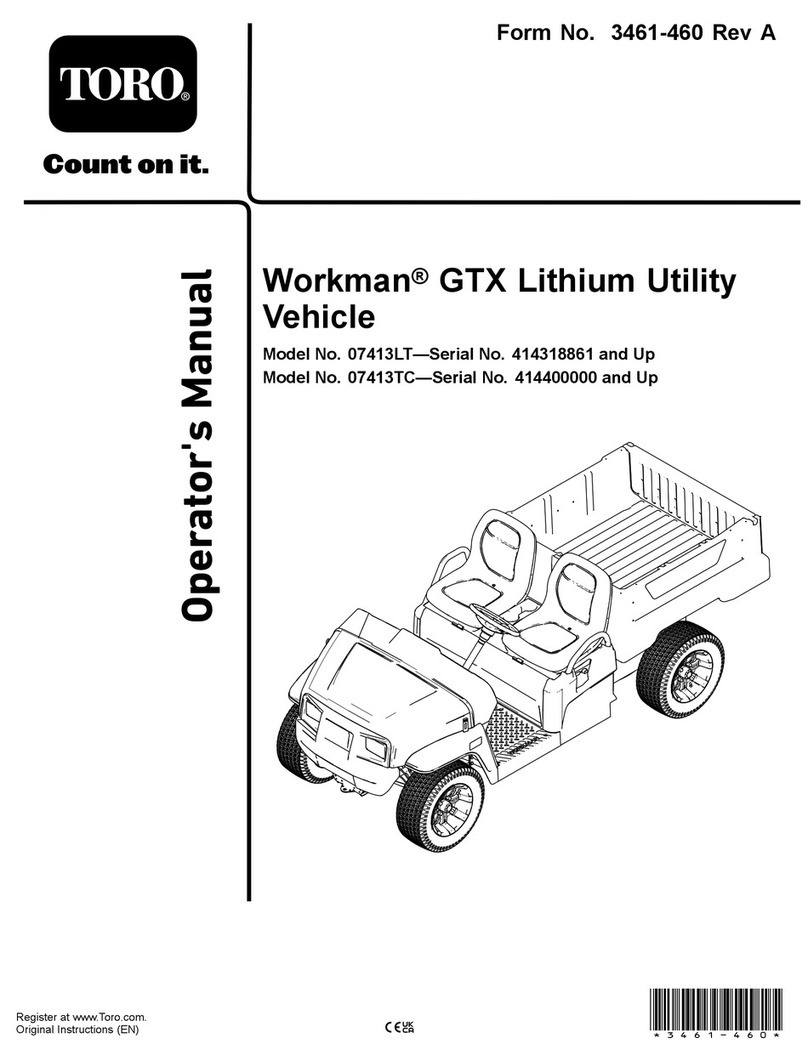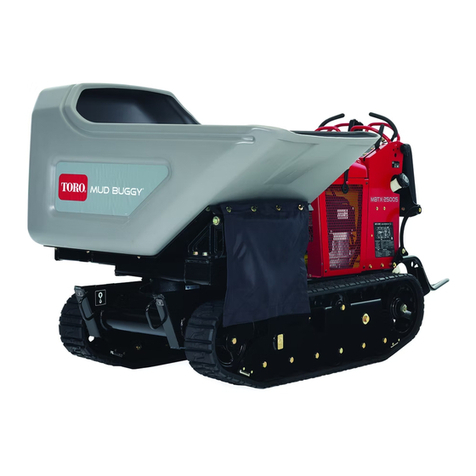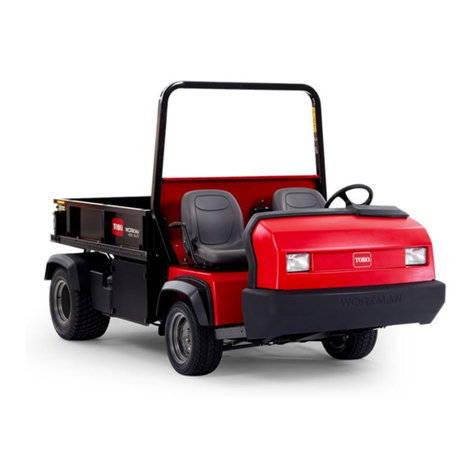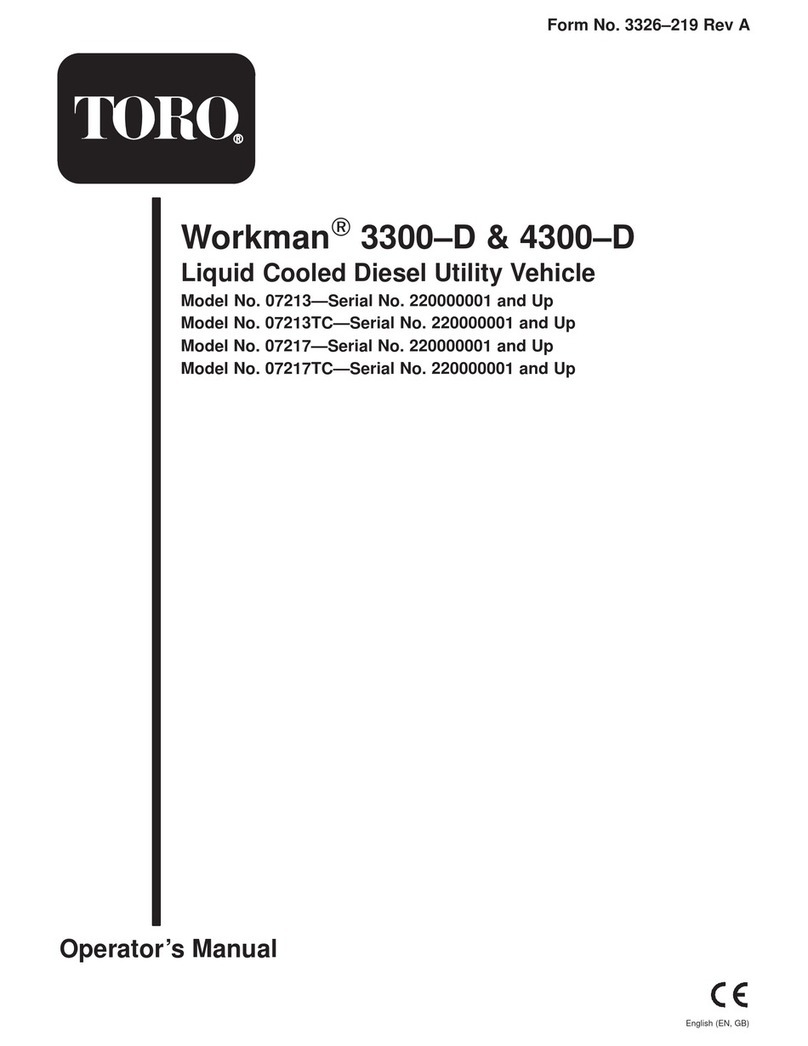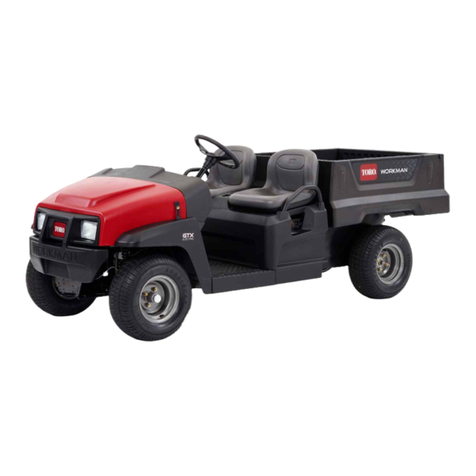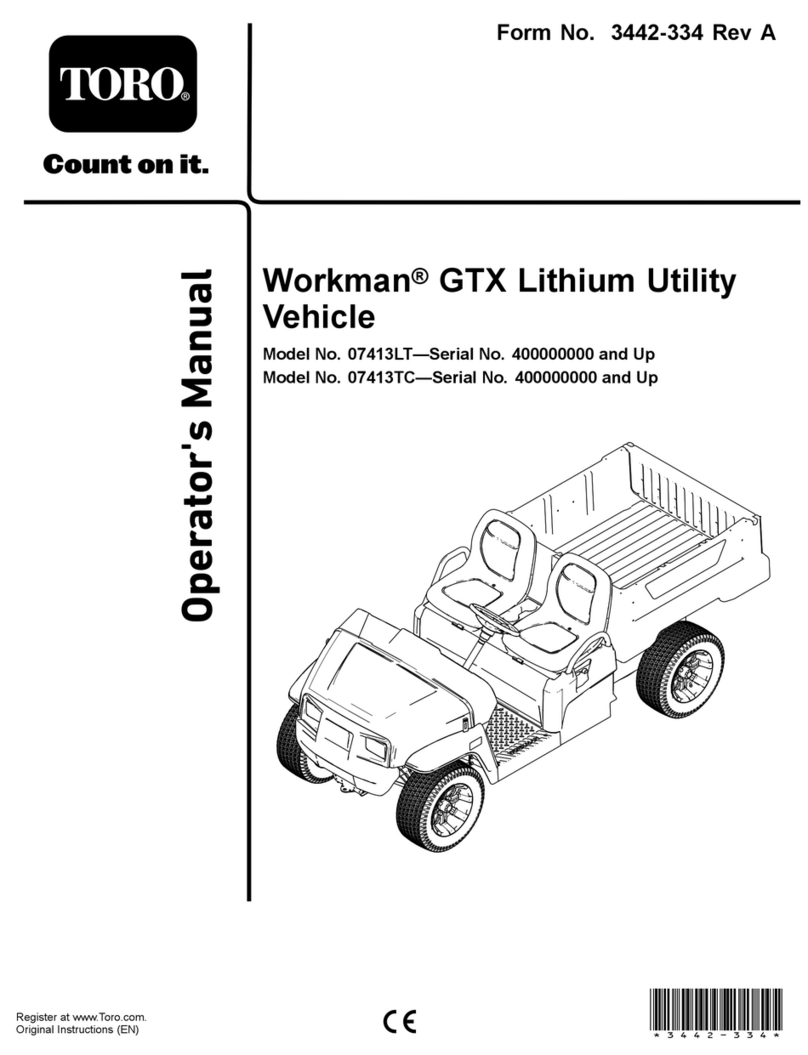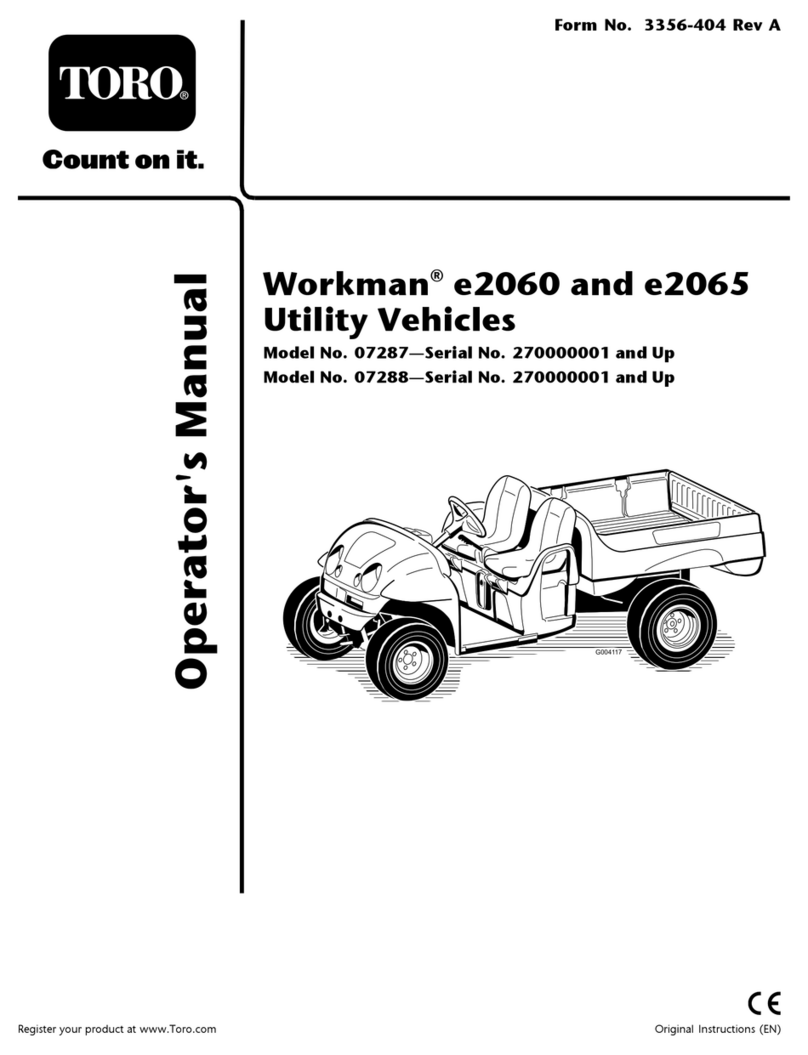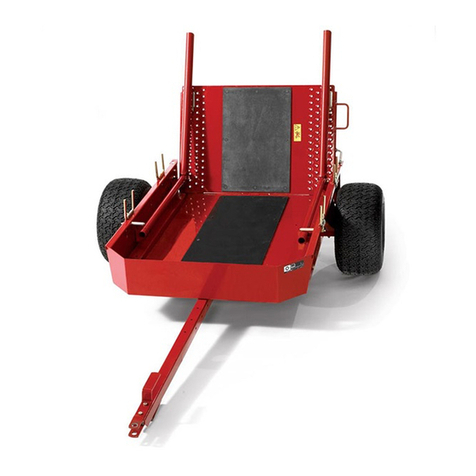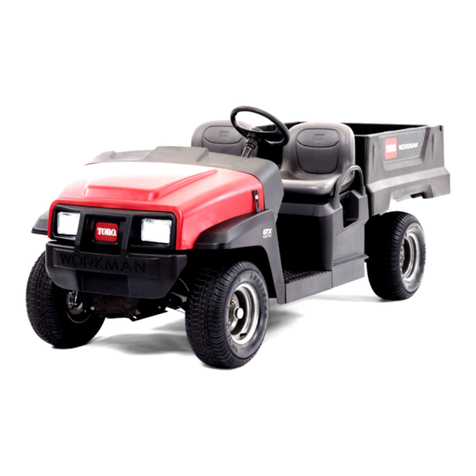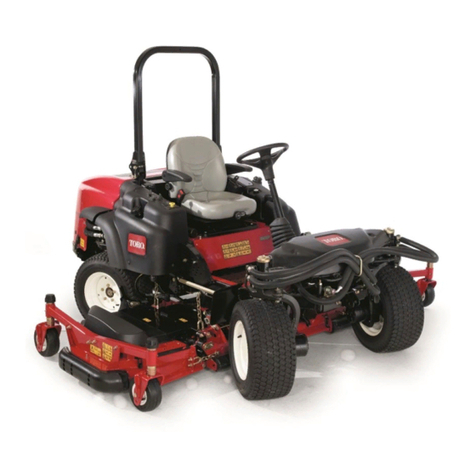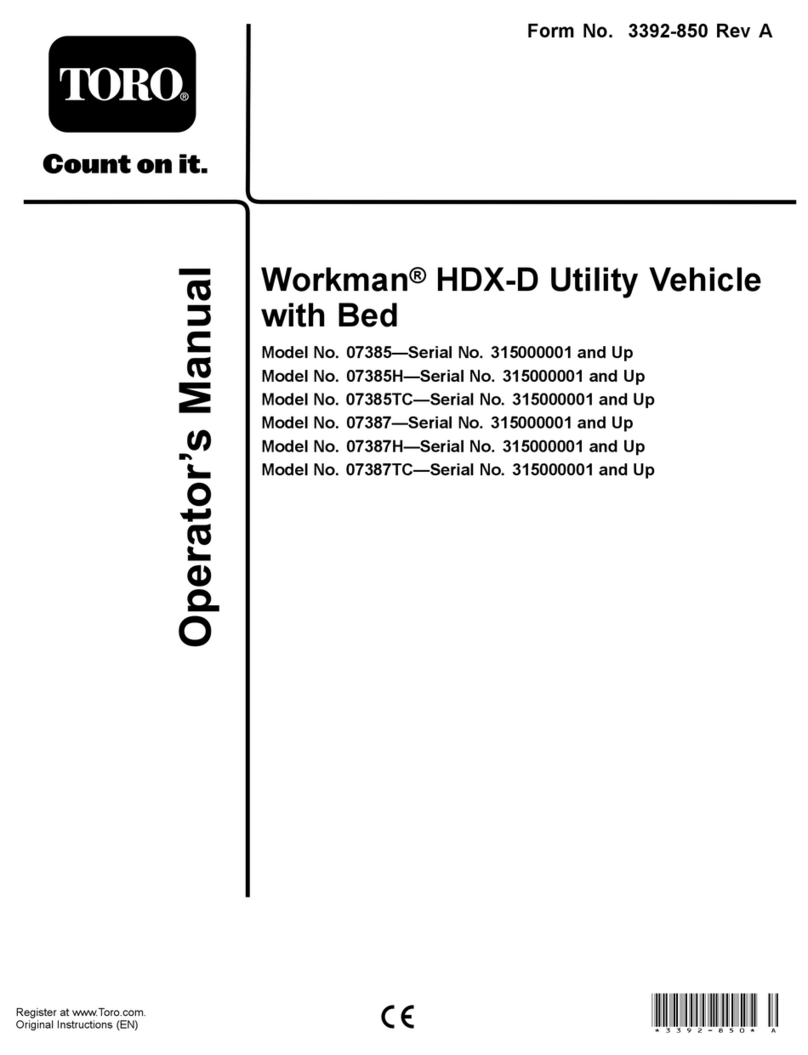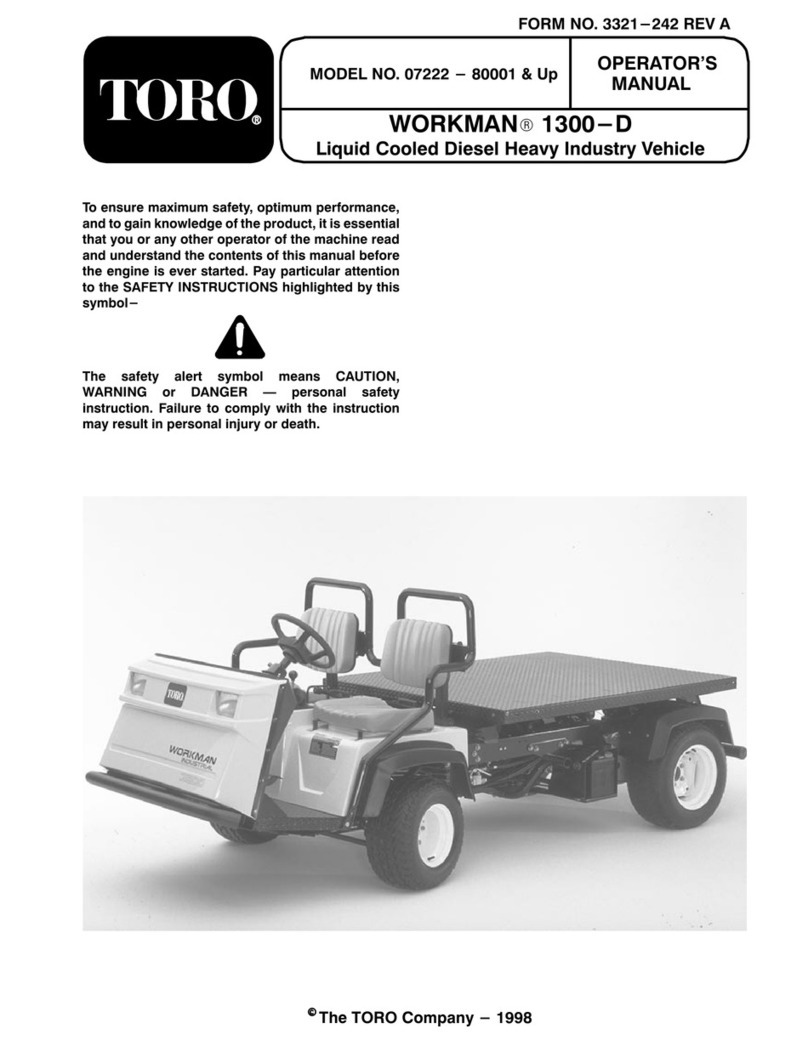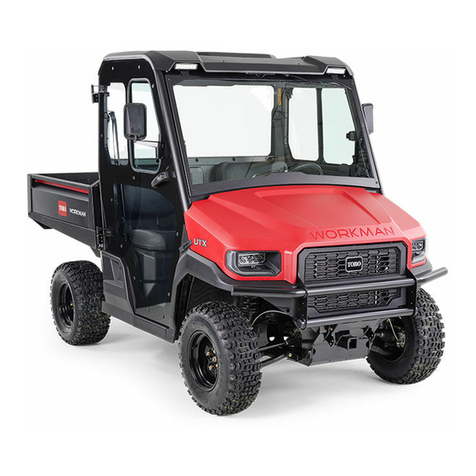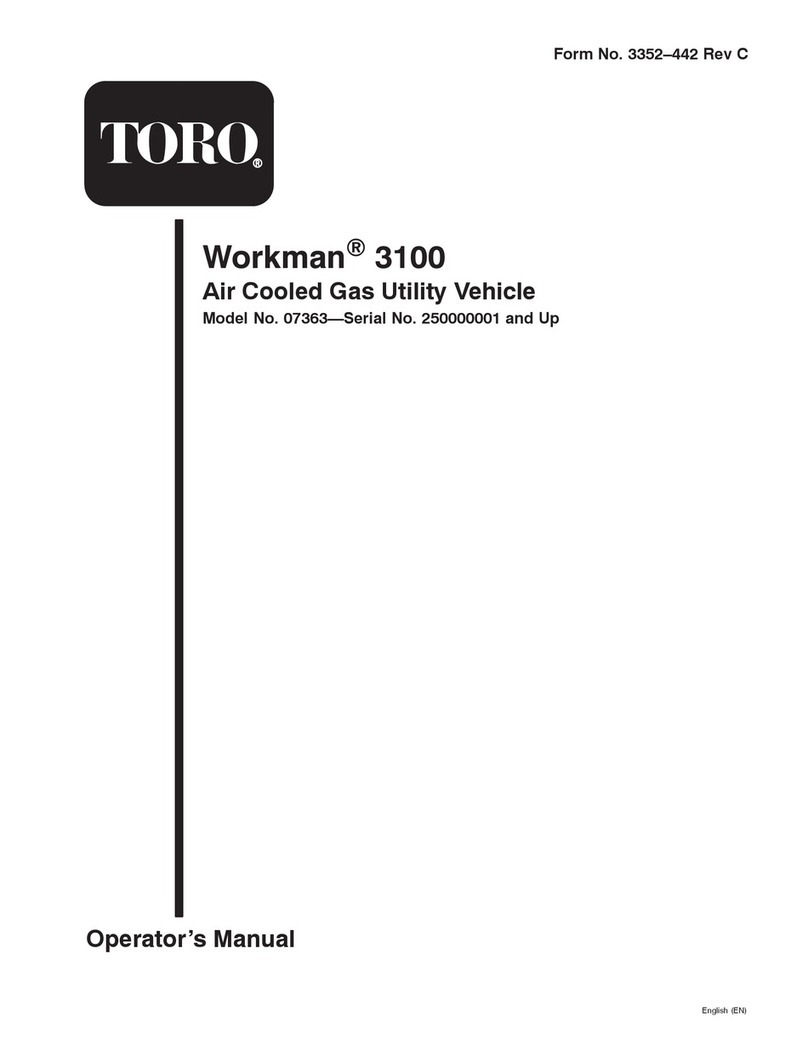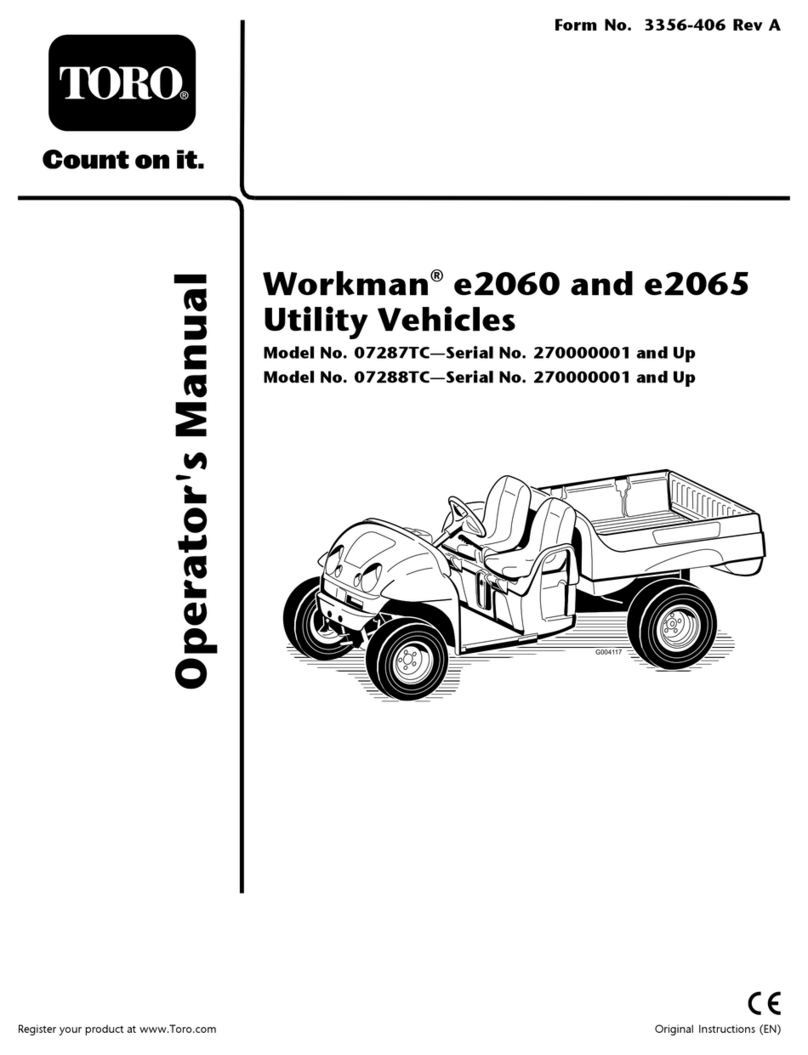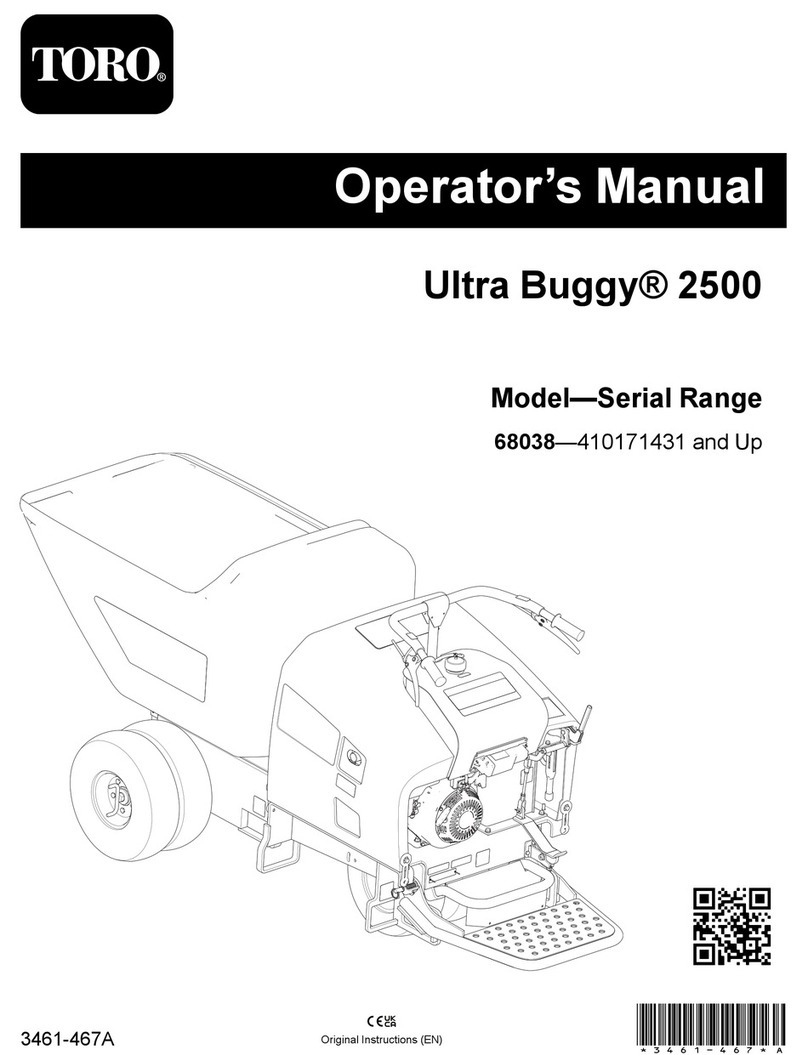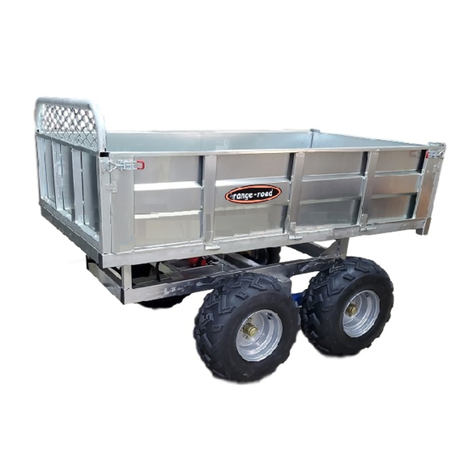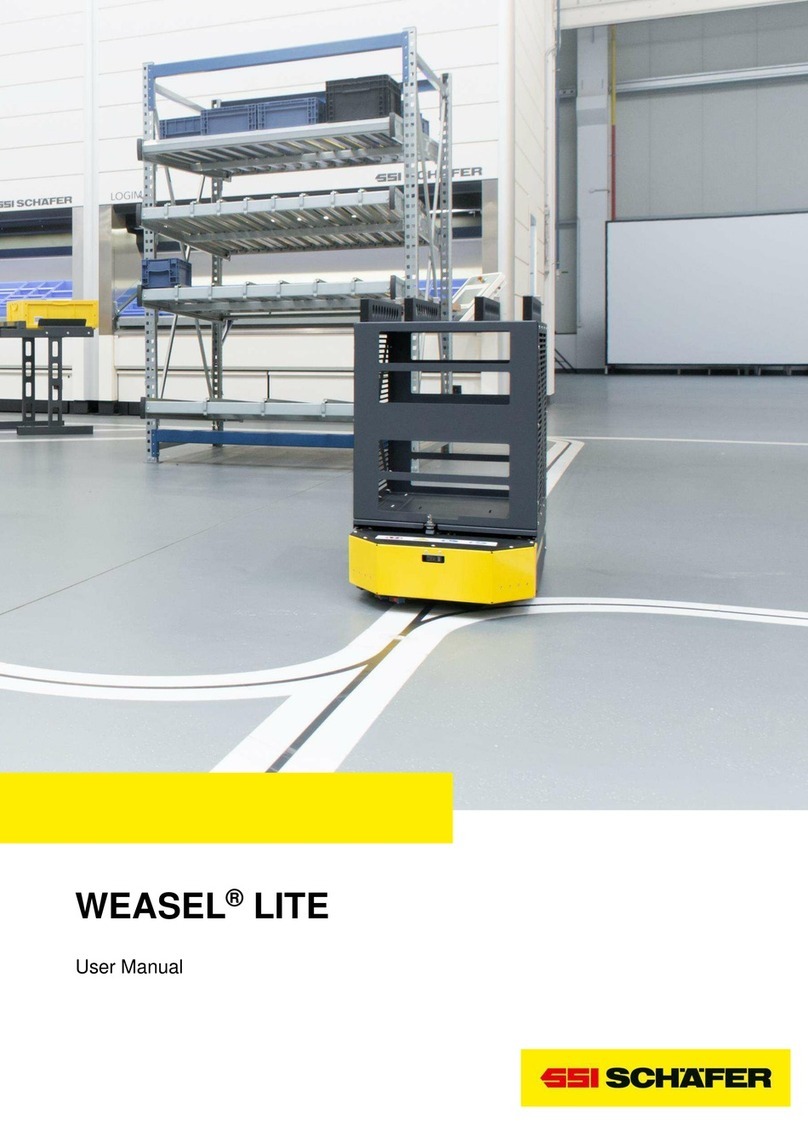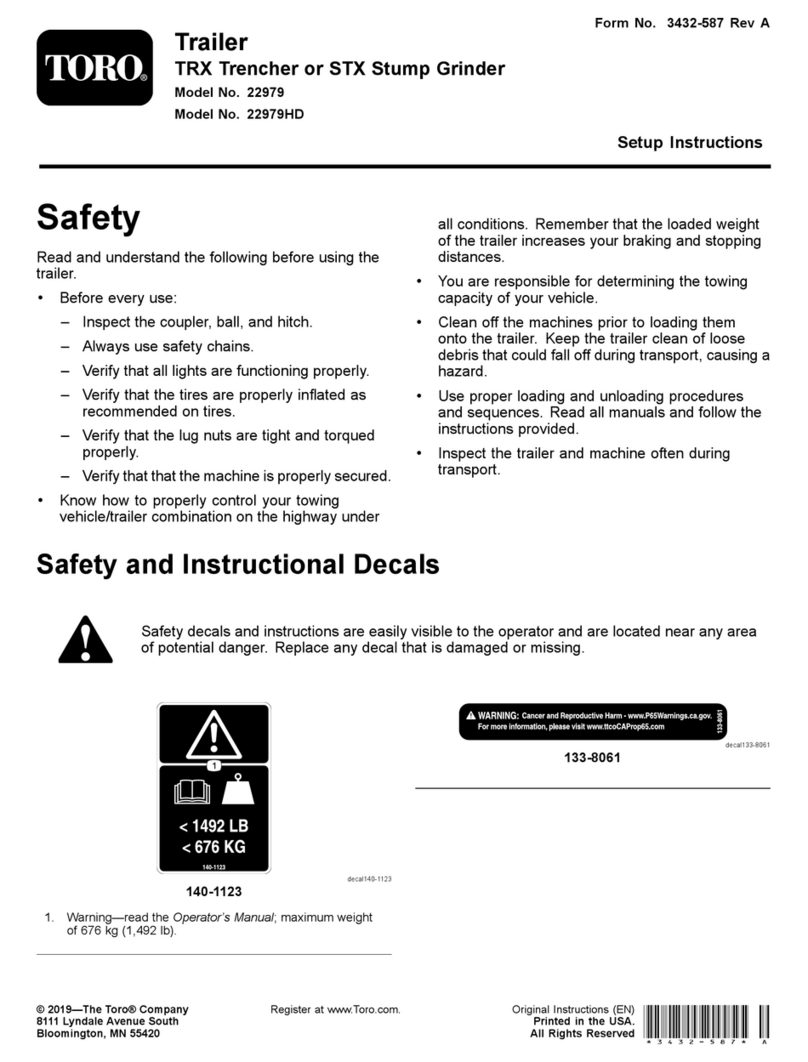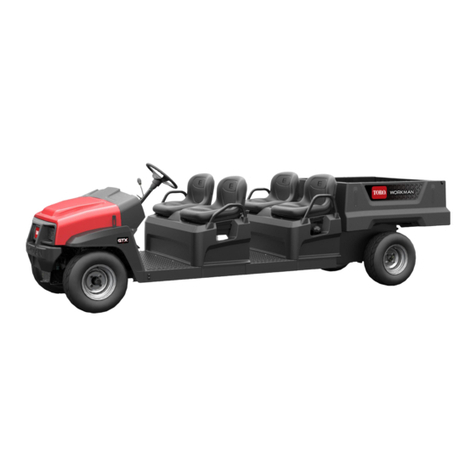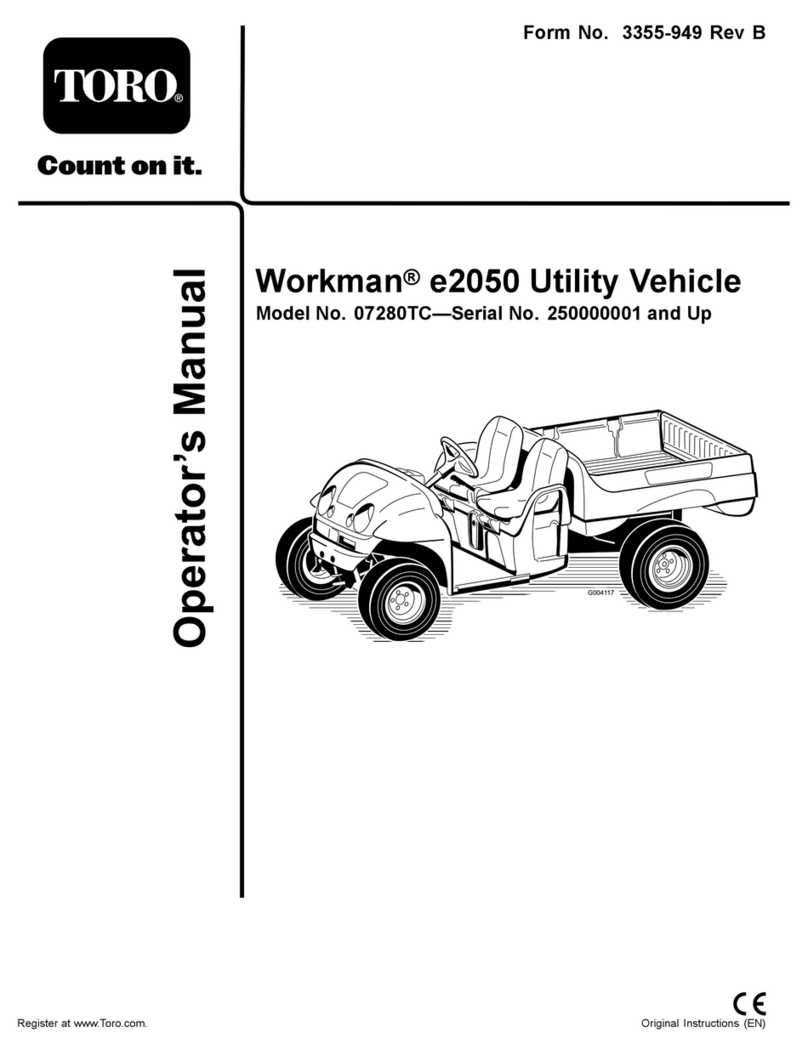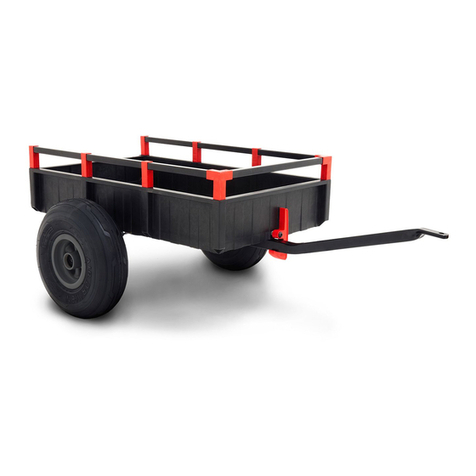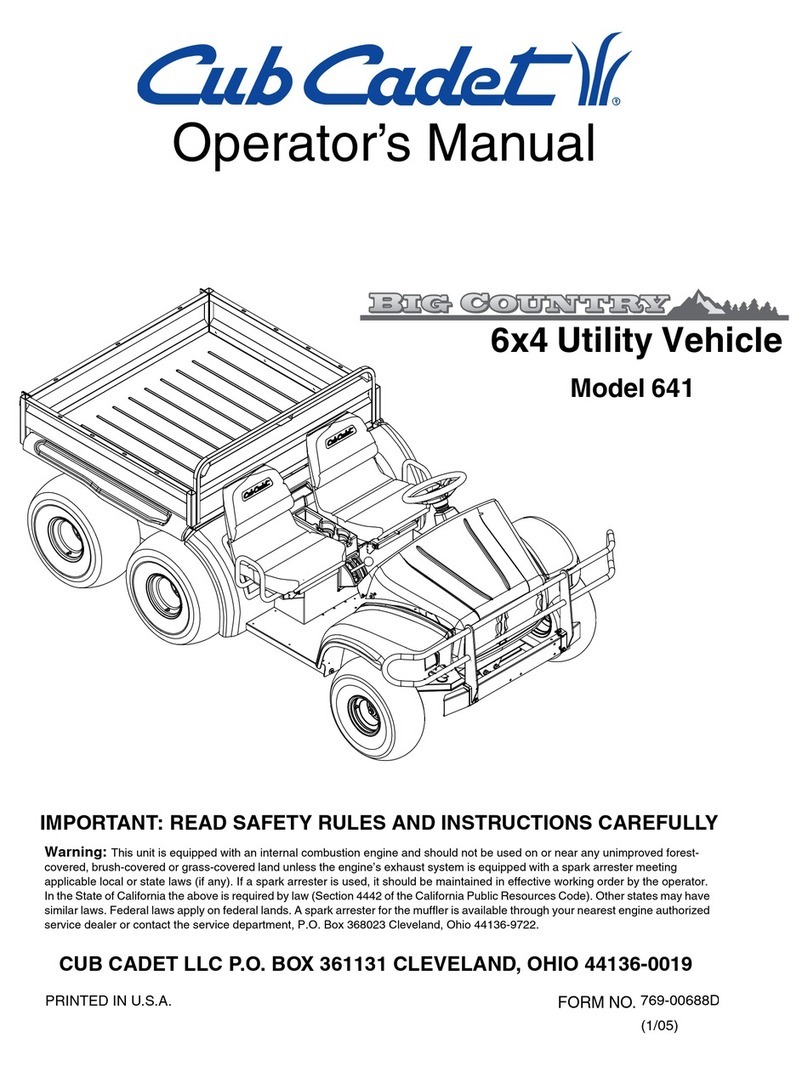
Contents
Introduction .......................................................2
Safety ..................................................................4
Safe Operating Practices . . . . . . . . . . . . . . . . . . . . . . 4
Before Operating .................................4
Operation ............................................5
Maintenance ........................................8
Sound Pressure ....................................8
Vibration .............................................8
Safety and Instr uctional Decals . . . . . . . . . . . . 9
Setup ................................................................ 11
1 Installing the W heels . . . . . . . . . . . . . . . . . . . . . . . 11
2 Installing the Steering W heel . . . . . . . . . . . 12
3 Installing the Bumper . . . . . . . . . . . . . . . . . . . . . . 12
4 Installing the Seats .......................... 13
5 Installing the Hitc h ......................... 13
6 Installing the Carg o Bo x . . . . . . . . . . . . . . . . . . 14
7 Acti v ating the Batter y . . . . . . . . . . . . . . . . . . . . . . 15
8 Adjusting the F ront W heel
T oe-in ............................... 15
9 R eading the Man ual and Viewing
the Safety Video . . . . . . . . . . . . . . . . . 16
Product Ov er view ............................................. 18
Controls ........................................... 18
Specifications ................................... 21
Operation .......................................................... 22
T hink Safety First .............................. 22
Pre-Star ting Chec ks ........................... 22
Chec king the Engine Oil . . . . . . . . . . . . . . . . . . . . 22
Chec king the Brak e Fluid
Lev el ................................. 22
Chec king the Tire Pressure . . . . . . . . . . . . . . . . . 22
Adding Fuel ...................................... 23
Chec king the T ransmission Oil
Lev el ................................. 24
Star ting the Engine ............................ 24
Stopping the V ehicle .......................... 24
P arking the V ehicle ............................ 24
Operating the Carg o Bo x . . . . . . . . . . . . . . . . . . . 24
Breaking in a New V ehicle . . . . . . . . . . . . . . . . . . 25
Loading the Carg o Bo x . . . . . . . . . . . . . . . . . . . . . . 26
T ranspor ting the V ehicle . . . . . . . . . . . . . . . . . . . . 26
T o wing the V ehicle ............................ 26
T o wing a T railer ................................. 27
Maintenance ...................................................... 28
R ecommended Maintenance
Sc hedule(s) ............................... 28
Daily Maintenance Chec klist . . . . . . . . . . . . . . 29
Premaintenance Procedures . . . . . . . . . . . . . . . . . . . . . . . 30
Maintaining the V ehicle under
Special Operating
Conditions ........................ 30
J ac king the V ehicle ............................. 30
Lubrication ................................................ 30
Adding Grease .................................. 30
Engine Maintenance .................................. 31
Ser vicing the Air Cleaner . . . . . . . . . . . . . . . . . . . 31
Ser vicing the Engine Oil . . . . . . . . . . . . . . . . . . . . 32
Ser vicing the Spark Plug . . . . . . . . . . . . . . . . . . . . 33
Fuel System Maintenance .......................... 33
Inspecting Fuel Lines and
Connections ...................... 33
R e placing the Fuel Filter . . . . . . . . . . . . . . . . . . . . 33
Electrical System Maintenance . . . . . . . . . . . . . . . . . . . 34
R e placing the Fuses ........................... 34
R e placing the Headlights . . . . . . . . . . . . . . . . . . . 34
Ser vicing the Batter y .......................... 34
Dri v e System Maintenance . . . . . . . . . . . . . . . . . . . . . . . . . 36
Chec king and Adjusting
Neutral .............................. 36
Inspecting the Tires ........................... 37
Adjusting the F ront
Suspension ........................ 37
Adjusting F ront W heel T oe-In . . . . . . . . . . . 38
Maintaining the Primar y Dri v e
Clutc h ............................... 39
Changing the T ransaxle Fluid . . . . . . . . . . . . . 40
Cooling System Maintenance . . . . . . . . . . . . . . . . . . . . . 40
Cleaning the Engine Cooling
Areas ................................. 40
Brak e Maintenance .................................... 41
Inspecting the Brak es ......................... 41
Chec king the Brak e Fluid
Lev el ................................. 41
Adjusting the P arking Brak e . . . . . . . . . . . . . . . 41
Belt Maintenance ....................................... 41
Ser vicing the Dri v e Belt . . . . . . . . . . . . . . . . . . . . . 41
Adjusting the Star ter Generator
Belt ................................... 42
Cleaning .................................................... 42
W ashing the V ehicle ........................... 42
Storag e .............................................................. 43
Sc hematics ........................................................ 44
3
